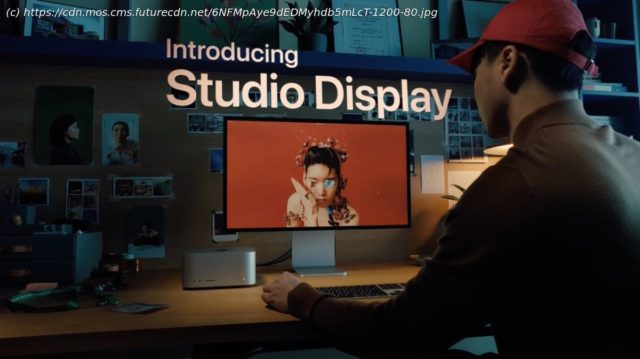Apple’s new pro-level monitor has some amazing audio tricks up its sleeve. But who is actually going to find them most useful?
I love spatial audio. I love the sensation of being put right inside a sonic sphere, with action happening all around me, or feeling like I’ve got a seat right inside the middle of an orchestra as the strings swoon overhead and the gong rattles from all angles. So why can I just not get my head around the inclusion of a spatial audio speaker system in the new Apple Studio Display? It’s a superlative offering from Apple (priced accordingly at $1,599 / £1,499 / AU$2,499), revealed at the company’s March 2022 event alongside the iPhone SE 3, M1 Ultra chipset and a new iPad Air. A 27-inch,5K display, it’s got lots of cool features that will make Apple die-hards and creatives squeal with joy. There’s an anti-reflective coating on a screen pushing 14.7 million pixels at 600 nits of brightness. There are a good number of ports, including three USB-C and a Thunderbolt 4 connection. It’s even got the 12MP camera with the person-tracking Center Stage video calling feature built-in, just like the latest iPads. The one spot it’s lacking is with HDR support, but, for the most part, that’s a discussion for another article. We’re here to talk audio, and what Apple has squeezed in here is inarguably impressive. Some monitors have no built-in speakers at all, instead, letting users supply their own for their desktops, while it’s rare to see anything more than some weak stereo speakers built into the majority of monitors. Apple has taken a completely different approach. The Studio Display instead sports six speakers, consisting of four force-canceling woofers and two tweeters. Paired with the A13 Bionic chip, as seen in the iPhone 13, it should be able to deliver convincing spatial sound from sources that support the format, such as a Netflix Dolby Atmos stream. It’s part of a wider push from Apple to bring spatial audio more listeners, with the inclusion of lossless and spatial music being added to the Apple Music streaming service even inspiring me to petition for a new, full-sized Apple HomePod.
Home
United States
USA — IT Apple’s Studio Display spatial audio speakers sound like a great idea… but...






